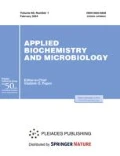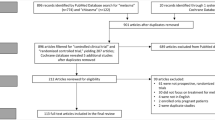Abstract
The processes of the autooxidation and photooxidation of tetrahydrobiopterin (Н4Bip) (a coenzyme present in a three- to fivefold excess in vitiligo) were studied in the context of vitiligo pathology and treatment. The study of the kinetics of Н4Bip autooxidation and analysis of the reaction products via high-performance liquid chromatography (HPLC) demonstrated that autooxidation was intensive at a rate constant of 1 × 10–3 s–1 with the formation of dihydrobiopterin, dihydropterin, and their oxidized derivatives. Analysis of the autooxidation data led to a new conclusion that the oxidation of the excess of Н4Bip in melanocytes obviously triggers an autocatalytic cycle of the synthesis of the excess of hydrogen peroxide (Н2О2). This, in turn, activates interferon-inducible GTP cyclohydrolase, which synthesizes an excess of Н4Bip. The autocatalytic cycle of excess Н2О2 synthesis apparently underlies the pathology of vitiligo. The excess Н2О2 is also partly spent to activate the immune system. The autocatalytic cycle can be broken via the conversion of Н4Bip into dihydropterin dimers during its UV photooxidation. The kinetics of Н4Bip was studied, the reaction products were identified, and the quantum yields of the formation of dihydropterin dimers were calculated. The action spectrum of UV radiation was constructed based on the quantum yield data. It shows that the range of 300–325 nm is efficient for vitiligo phototherapy.







Similar content being viewed by others
REFERENCES
Schallreuter, K.U., Wood, J.M., Pittelkow, M.R., Gutlich, M., Lemke, K.R., Rödl, W., Swanson, N.N., Hitzemann, K., and Ziegler, I., Science, 1994, vol. 263, no. 5152, pp. 1444–1446.
Schallreuter, K.U., Moore, J., Wood, J.M., Beazley, W.D., Peters, E.M., Marles, L.K., Behrens-Williams, S.C., Dummer, R., Blau, N., and Thony, B., J. Invest. Dermatol., 2001, vol. 116, no. 1, pp. 167–174.
Bidaki, R., Majidi, N., Moghadam Ahmadi, A., Bakhshi, H., Sadr Mohammadi, R., Mostafavi, S.A., Kazemi Arababadi, M., Hadavi, M., and Mirzaei, A., Clin. Cosmet. Investig. Dermatol., 2018, vol. 11, pp. 383–386.
Cho, H.K., Eun, L.Y., Song, J.S., Kang, W.H., and Ro, B.I., Ann. Dermatol., 2009, vol. 21, no. 1, pp. 75–77.
Park, J.M., Kim, H.J., Bae, B.G., and Park, Y.K., Ann. Dermatol., 2009, vol. 21, no. 3 P. 330–333.
Hedayat, K., Karbakhsh, M., Ghiasi, M., Goodarzi, A., Fakour, Y., Akbari, Z., Ghayoumi, A., and Ghandi, N., Health Qual. Life Outcomes, 2016, vol. 14, no. 86. https://doi.org/10.1186/s12955-016-0490-y
Morales-Sánchez, M.A., Vargas-Salinas, M., Peralta-Pedrero, M.L., Olguín-García, M.G., and Jurado-Santa Cruz, F., 2017, vol. 108, no. 7, pp. 637–642.
Hasse, S., Gibbons, N.C., Rokos, H., Marles, L.K., and Schallreuter, K.U., J. Invest. Dermatol., 2004, vol. 122, no. 2, pp. 307–313.
Eskandani, M., Golchai, J., Pirooznia, N., and Hasannia, S., Indian J. Dermatol., 2010, vol. 55, no. 1, pp. 15–19.
Spencer, J.D., Gibbons, N.C., Rokos, H., Peters, E.M., Wood, J.M., and Schallreuter, K.U., J. Invest. Dermatol., 2007, vol. 127, no. 2, pp. 411–420.
Schallreuter, K.U., Salem, M.A., Holtz, S., and Panske, A., FASEB J., 2013, vol. 27, no. 8, pp. 3113–3122.
Kaufman, S., Proc. Natl. Acad. Sci. U. S. A., 1963, vol. 50, no. 6, pp. 1085–1093.
Buglak, A.A., Telegina, T.A., Lyudnikova, T.A., Vechtomova, Y.L., and Kritsky, M.S., Photochem. Photobiol., 2014, vol. 90, no. 5, pp. 1017–10126.1.
Buglak, A.A., Telegina, T.A., and Kritsky, M.S., Photochem. Photobiol. Sci., 2016, vol. 15, no. 6, pp. 801–811.
Buglak, A.A., Telegina, T.A., Vorotelyak, E.A., and Kononov, A.I., J. Photochem. Photobiol. A, 2019, vol. 372, pp. 254–259.
Gawkrodger, D.J., Br. J. Dermatol., 2009, vol. 161, no. 4, pp. 721–722.
Telegina, T.A., Lyudnikova, T.A., Buglak, A.A., Vechtomova, Y.L., Biryukov, M.V., Demin, V.V., and Kritsky, M.S., J. Photochem. Photobiol. A, 2018, vol. 354, pp. 155–162.
Davis, M.D. and Kaufman, S., J. Biol. Chem., 1989, vol. 264, no. 15, pp. 8585 – 8596. a
Funding
This work was supported by the Russian Science Foundation (grant no. 20-73-10029).
Author information
Authors and Affiliations
Corresponding author
Ethics declarations
The authors declare that they have no conflict of interest. This article does not contain any studies involving animals or human participants performed by any of the authors.
Additional information
Translated by A. Barkhash
Rights and permissions
About this article
Cite this article
Telegina, T.A., Vechtomova, Y.L., Kritsky, M.S. et al. Tetrahydrobiopterin Photooxidation: a Key Process in Vitiligo Phototherapy. Appl Biochem Microbiol 57, 571–578 (2021). https://doi.org/10.1134/S000368382105015X
Received:
Revised:
Accepted:
Published:
Issue Date:
DOI: https://doi.org/10.1134/S000368382105015X




